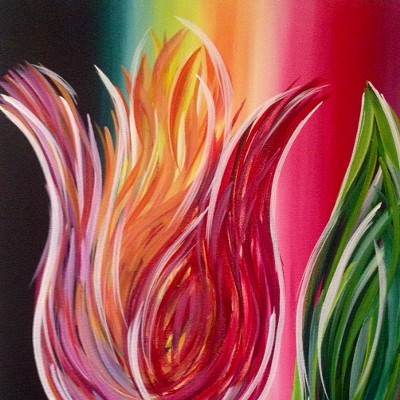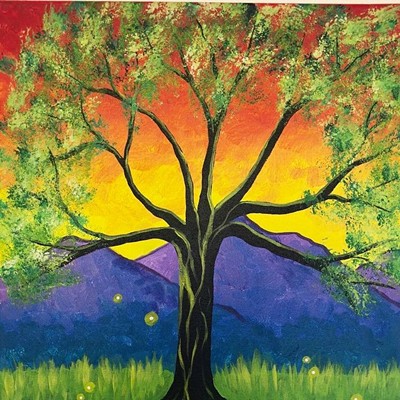Hot Art: Burning Images at the University of Arizona Museum of Art features 16 works by three contemporary artists fascinated by what fire can do. The artists' processes and their different approaches to using fire are the most interesting aspects of Hot Art.
Although John Cage, who died in 1992, was an artist and a poet, he is best known as one of the most important avant-garde composers and musicians of the 20th century. According to Peter Briggs, the UAMA's chief curator who curated Hot Art, Cage created the five prints included in this exhibition by having fires built on a printing press and then putting pieces of paper over the fires. By running the damp paper through the press, he put out the fire and fixed the smoke on the paper. The idea of capturing something as ephemeral as smoke on paper seems a natural progression for a composer whose famous composition "4'33" consists of four minutes and 33 seconds of silence performed by a pianist at a grand piano.
Paul Chojnowski draws his images with a torch on moistened paper. The fire turns the paper into a spectrum of colors from warm sepia to carbon black, depending on how moist the paper is. Although some of his images seem almost abstract, the white circles on the paper of his night scenes resolve into car headlights on an interstate or into city lights in town. The darkness in the distance comes from being seared by fire, but the areas of light have never been touched by fire, the source of light. That is the irony of Chojnowski's images.
Andrew Bennett affixes many products associated with fire (soot, sulfur, wax, wicks, carbon and trace elements from wood matches and candles) to panels smoothed with gesso. Bennett's images suggest the world of matches, fire and smoke. "Magnitude and Direction" features 12 small panels. Streaks of light sweep in different directions across each black-and-white image for a sense of flame and smoke in motion. Bennett's two other pieces combine patterns and different media to create optical illusions. Bennett has the most interesting and varied imagery of the three artists, and it would be interesting to see how he manipulates his media in the rest of his fire-inspired work.
In seeking out work for Hot Art, Briggs gathered together three artists who each explore a different stage in the process of burning. Bennett's images pursue the strike of the match, the blowing flame. Cage's prints capture the dissipating smoke, and Chojnowski's drawings preserve the charred remains. That is the way the exhibition is laid out: flame, smoke, charcoal.










